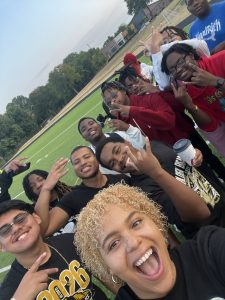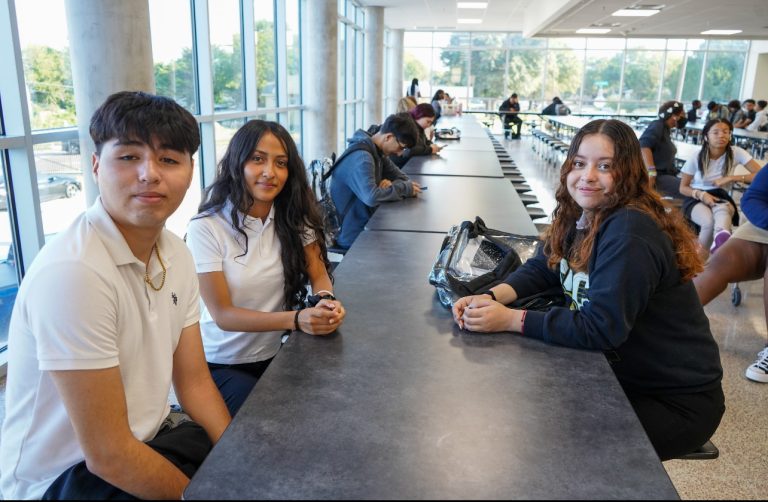South Oak Cliff High School is proving with every passing year why it is regarded as “the Mecca.”
 The campus, long celebrated for its athletic success, is now making headlines for academic growth as well. Its latest STAAR results show the strength of both students and strategy.
The campus, long celebrated for its athletic success, is now making headlines for academic growth as well. Its latest STAAR results show the strength of both students and strategy.
In two years, SOC advanced by two letter grades and came within one point of earning an A rating for the 2024-2025 school year.
Willie Johnson, who returned to SOC as principal after serving as a teacher and coach, said the results represent a shift in expectations for what students on the city’s southern side can achieve. For years, he added, students on the south side of Dallas were recognized for their athletic talent but not always seen for their academic potential.
“The score report tells you that no matter what your plight is, your income level, your circumstance, if you can create a great environment and offer the right support, then no matter where they reside, kids will perform the same as any kids across the city.”
For Nina Atai, lead teacher in the mathematics department, SOC students have a unique level of comfort and confidence.
“Most students are afraid of math,” she said. “As educators, we spend the first few weeks of school building mathematical confidence in our students. We reward effort and participation during the early week, as well as student voice. Our goal is to ensure all students meet grade level expectations with lessons that engage and are prescriptive to students’ needs.”
 Among the most effective techniques, she said, were the “screen-to-scratch” method and “15-in-15” strategy, which challenged students to solve 15 questions in 15 minutes at the start of class once all concepts had been taught.
Among the most effective techniques, she said, were the “screen-to-scratch” method and “15-in-15” strategy, which challenged students to solve 15 questions in 15 minutes at the start of class once all concepts had been taught.
“We realized this triggered student thinking and required them to remember skills and concepts previously taught,” she said. “This built an immense amount of confidence as students were able to focus on information and skills they do know and build on their academic strengths.”
Collaboration among teachers helped make those strategies successful. Algebra I instructors shared common planning periods to align lessons.
Johnson believes morale goes a long way, and for him, three defining principles shaped his approach.
“I always knew there was untapped potential. When I arrived, I told the staff I wanted to do three things: improve culture, create sustainable systems, and increase our outcomes,” he said.

Those systems, he explained, were designed to meet student needs personally and academically. Clubs and extracurricular activities became central to helping students feel connected, with clear academic standards tied to participation.
With new investments in campus culture, students found a reason to stay committed to The Mecca, and that commitment translated into stronger STAAR results.
Sponsors and coaches were more than instructors; they were mentors who motivated students to meet high expectations.
“People say instruction takes priority. We flipped it because a sense of belonging is what gives us the opportunity to mentor kids,” Johnson said. “We addressed our students and their needs. We know that if kids don’t have basic needs, they’re not going to be successful. We know the biggest need is a sense of belonging.”

